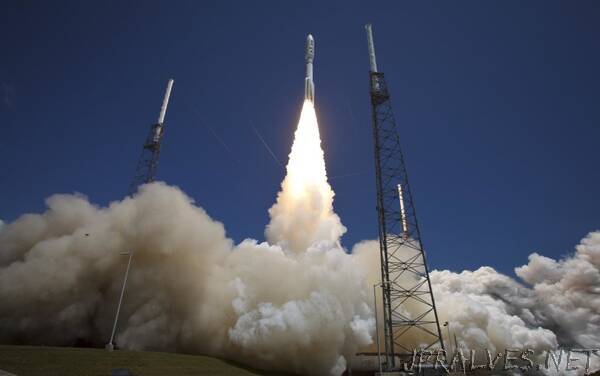
“The re-entry of abandoned stages of rockets left in orbit from space launches have a six to 10 per cent chance of severely injuring or killing a human being in the next decade, according to a new UBC study.
Researchers say governments need to take collective action and mandate that rocket stages are guided safely back to Earth after their use, which could increase the cost of a launch, but potentially save lives.
“Is it permissible to regard the loss of human life as just a cost of doing business, or is it something that we should seek to protect when we can? And that’s the crucial point here: we can protect against this risk,” says lead author Dr. Michael Byers, professor in UBC’s department of political science.
When objects such as satellites are launched into space, they use rockets, parts of which are often left in orbit. If these leftover rocket stages have a low enough orbit, they can re-enter the atmosphere in an uncontrolled way. Most of the material will burn up in the atmosphere, but potentially lethal pieces can still hurtle towards the ground.
In the Nature Astronomy paper, the researchers looked at more than 30 years of data from a public satellite catalogue, and calculated the potential risk to human life over the next 10 years, given the corresponding rate of uncontrolled rocket body re-entries, their orbits, and human population data.
Using two different methods, they found that current practices have a six to 10 per cent chance of one or more casualties over the next decade if each re-entry spreads, on average, dangerous debris over an area of 10 metres squared. While the calculations consider the probability of one or more casualties for people on the ground, Dr. Byers says they do not take into account worst case scenarios, such as a piece of debris striking an airplane in flight. In addition, they found the risk is borne disproportionately by the global south, despite major space-faring nations being located in the north, with rocket bodies being approximately three times more likely to land at the latitudes of Jakarta, Dhaka and Lagos than those of New York, Beijing or Moscow. This is due to the distribution of orbits used when launching satellites.
While the risk to any one individual is very low, the authors note that dangerous debris from space hitting Earth’s surface is far from unheard of, including a 12-metre-long pipe from a Long March 5B rocket that struck a village in the Ivory Coast in 2020, causing damage to buildings. And space launches are increasing, says co-author Dr. Aaron Boley, associate professor in the department of physics and astronomy. “Risks have been evaluated on a per-launch basis so far, giving people the sense that the risk is so small that it can safely be ignored. But the cumulative risk is not that small. There have been no reported casualties yet, and no mass casualty event, but do we wait for that moment and then react, particularly when it involves human life, or do we try and get in front of it?”
Technology and mission designs currently exist that can largely remove this risk, including by having engines that reignite, as well as extra fuel, to guide the rocket bodies safely to remote areas of ocean. But these measures cost money and there are currently no multilateral agreements mandating that companies make these changes, says Dr. Byers.
Examples exist of such international collective action, Dr. Byers says, including the mandated transition from single to double hulls on oil tankers following the Exxon Valdez spill and the phasing out of chlorofluorocarbons to protect the ozone layer in the 1980s. “Both required some cost to change practice but in response to new scientific analysis, there was a collective will to do so and, in both instances, they were complete successes. What we’re proposing is entirely feasible and there’s therefore no excuse for delaying action on this matter.”
Future research directions will include adding to the models, which currently assume all rocket bodies are the same size, says co-author Ewan Wright, a doctoral student in interdisciplinary studies. “While some have the mass of an average washing machine, others have masses of up to 20 tonnes. This affects how much material burns up in the atmosphere, and adding this detail would improve our models. However, very little is known about how rocket bodies burn up, so having a better understanding of the ‘casualty area’ of lethal debris that reaches the ground is important.””
